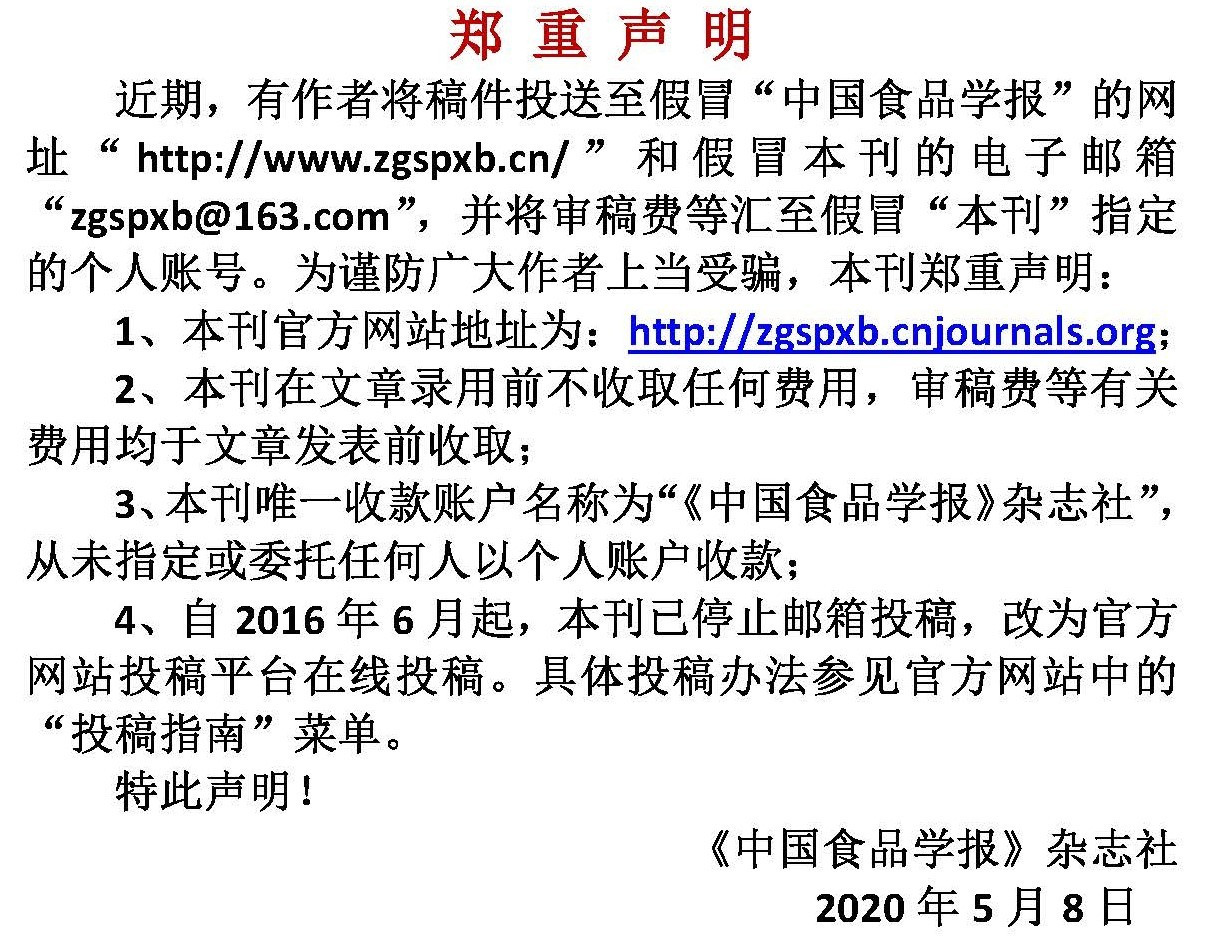枇杷花多酚微胶囊的制备工艺及特性研究
作者:
作者单位:
(1.浙江师范大学生命科学学院 浙江金华 321004;2.浙江省特色经济植物生物技术研究重点实验室 浙江金华 321004)
作者简介:
通讯作者:
中图分类号:
基金项目:
Studies on the Preparation Process and Characteristics of Loquat Flower Polyphenol Microcapsules
Author:
Affiliation:
(1.College of Life Sciences, Zhejiang Normal University, Jinhua 321004, Zhejiang;2.Zhejiang Provincial Key Laboratory of Biotechnology on Specialty Economic Plants, Jinhua 321004, Zhejiang)
Fund Project:
引用本文
刘芬芬,蒲首丞,赵雯靓,徐丽珊.枇杷花多酚微胶囊的制备工艺及特性研究[J].中国食品学报,2025,(1):208-218
复制分享
文章指标
- 点击次数:
- 下载次数:
- HTML阅读次数:
历史
- 收稿日期:2024-01-29
- 最后修改日期:
- 录用日期:
- 在线发布日期: 2025-03-05
- 出版日期:
文章二维码

版权所有 :《中国食品学报》杂志社 京ICP备09084417号-4
地址 :北京市海淀区阜成路北三街8号9层 邮政编码 :100048
电话 :010-65223596 65265375 电子邮箱 :chinaspxb@vip.163.com
技术支持:北京勤云科技发展有限公司
地址 :北京市海淀区阜成路北三街8号9层 邮政编码 :100048
电话 :010-65223596 65265375 电子邮箱 :chinaspxb@vip.163.com
技术支持:北京勤云科技发展有限公司
